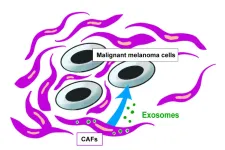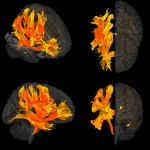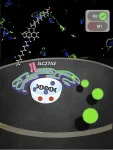(Press-News.org)
Understanding of and trust in science and scientists are dangerously low, and initial studies suggest that a general lack of interest in science is even more of a problem than skepticism in Austria. A key partner in alleviating this mistrust, clearing up misunderstandings, and building up enthusiasm for science must be the media in general and science journalists in particular. However, these journalists need access to the information as well as the resources to work independently and give full flight to their curiosity and creativity. To work towards these goals and promote excellent science journalism, ISTA initiated a program to host journalists for two-to-four-month residencies on campus. After numerous interviews from candidates around the world, the Institute has invited two young journalists to the research campus in Klosterneuburg.
Jackson W. Ryan: Diving deep and pulling the reader along
“The kind of science journalism that is most impactful to me is created by being around scientists in their day-to-day work, and understanding their motivations and inspiration,” says science journalist Jackson W. Ryan. The residency program offers him an opportunity to work closely with scientists and capture these insights in stories that Ryan hopes will “change perceptions, inspire awe, and improve science media literacy.” A specialist in long-form journalism, Ryan’s stories dive deep into a topic and connect readers to scientists, while also conveying the importance and uncertainty of the scientific process. Currently the science editor at CNET.com, Ryan completed a PhD with a focus on bone biology before following his passion to explore science as a journalist. He has since received multiple awards for his work, such as the 2022 Eureka Prize for Science Journalism for a series based on his expedition to Antarctica. On campus since February, Ryan will be at the Institute until mid-May.
Mark Belan: A picture is worth a thousand words
Mark Belan is a scientific illustrator based in Canada and the second journalist to join the residency program at ISTA. He sees visuals as a key way to engage the public with science and technology. Belan has two master’s degrees, one in geochemistry and astrobiology, the other in biomedical communications. Despite this scientific background, “I am a member of the general public when I approach a topic I am unfamiliar with,” Belan explains. “My work is inspired by my own learning experience and what that could look like visually for new learners.” Guided strictly by data and science, Belan uses his visuals to nurture an appreciation for and understanding of science and research. The residency program offers not only a chance for Belan to collaborate closely with scientists, he is eager to explore the types of visual storytelling that emerge from exposure to the variety of scientific disciplines at the Institute. Belan’s residency begins today, March 22, and will end in late July.
Campus engagement
During their time at ISTA, the journalists will focus on research groups on campus, writing several articles each month in addition to pursuing their own work. Also as part of their residency, Ryan and Belan will bring topics of science communication, journalism, and literacy to the campus through workshops and presentations. These discussions will de-mystify the process of science journalism, as well as equip scientists to collaborate with the media and tell their own stories effectively.
ISTA President Martin Hetzer is enthusiastic about the program: “We are committed to promoting scientific communication and deepening the understanding of the positive impact of our research on society. The residency program is a great opportunity to engage in a dialogue between scientists and journalists to explore new ways of communicating ISTA’s groundbreaking research, enhancing public interest and support for the Institute and for science in general.” Florian Schlederer, Head of Communications and Events, adds: “With science journalism being cut from many media outlets worldwide, I am truly excited that we work to counter that at ISTA. A good story is a powerful way to inspire people about basic research. Another one is through art—thus, I’m proud to announce that ISTA will also welcome its first two artists in residence this year.”
The next call for the residency program will open in the fall of 2023.
**
About ISTA
The Institute of Science and Technology Austria (ISTA) is a PhD-granting research institution located in Klosterneuburg, 18 km from the center of Vienna, Austria. ISTA employs professors on a tenure-track model, post-doctoral researchers and PhD students. The Graduate School of ISTA offers fully funded PhD positions to highly qualified candidates with a Bachelor’s or Master’s degree in biology, mathematics, computer science, physics, chemistry, and related areas. While dedicated to the principle of curiosity-driven research, ISTA aims to deliver scientific findings to society through technological transfer and science education. The current President is Martin Hetzer, a renowned molecular biologist and former Senior Vice President at The Salk Institute for Biological Studies in California, USA.
www.ista.ac.at
END
Malignant melanoma is a relatively aggressive type of skin cancer. When detected early, it is usually treatable by surgical resection only, but metastases develop often spreading to distant areas. Currently, tumor thickness and the presence of ulceration are some of the known prognostic factors used as indicators of malignant melanoma. Therefore, the discovery of valuable markers to assess the malignant potential of melanoma more accurately may be necessary to develop appropriate treatments.
Cross talk between cancer cells and surrounding stromal cells is ...
For the first time, researchers have developed a form of the omega-3 fatty acid docosahexaenoic acid (DHA) that is capable of crossing into the eye’s retina to ward off visual declines related to Alzheimer’s disease, diabetes and other disorders.
The DHA found in fish oil capsules and other supplements is typically in a form called triacylglycerol (TAG) DHA. Although TAG-DHA has benefits in other parts of the body, it does not reach the eyes because it cannot travel from the bloodstream into the retina. For the study, ...
The lower prevalence of ‘risky’ sex—with multiple or new partners without using condoms—which occurred during the early stages of the COVID-19 pandemic, was still evident a year after Britain’s first lockdown, reveal the results of a major national survey, published online in the journal Sexually Transmitted Infections.
While there were fewer reported unplanned pregnancies and abortions than indicated by a comparable survey a decade earlier, there were significantly higher prevailing levels of sexual dissatisfaction and worries ...
People with atopic (allergic) diseases like asthma or eczema may be at heightened risk of the painful and often disabling joint condition, osteoarthritis, finds research published online in the Annals of the Rheumatic Diseases.
Drugs used to dampen down the physiological prompts for allergic reactions in the body may help lessen this risk, suggest the researchers.
Osteoarthritis is the most common form of arthritis. But despite the high prevalence, substantial costs, and debilitating impact of the disease, there is as yet no effective ...
Engaging communities in developing a real-time early warning system could help to reduce the often-devastating impact of flooding on people and property – particularly in mountainous regions where extreme water events are a ‘wicked’ problem, a new study reveals
Flash floods are becoming more frequent and damaging to the lives and property of vulnerable people, but researchers believe that using a SMART approach to engage with those living in such areas will help to better signal impending risk from flooding.
Scientists believe that combining meteorological data with information on how people live and work in such regions, will help disaster risk ...
For the first time, researchers have identified specific regions of the brain that are damaged by high blood pressure and may contribute to a decline in mental processes and the development of dementia.
High blood pressure is known to be involved in causing dementia and damage to brain function. The study, which is published in the European Heart Journal [1] today (Tuesday), shows how this happens. It gathered information from a combination of magnetic resonance imaging (MRI) of brains, genetic analyses and observational data from thousands of patients to look at the effect of high blood pressure on cognitive function. The researchers then checked their findings ...
Growing concerns over the potential health effects of exposure to phthalates, a component of many plastics and also known as a plasticizer, have led to a search for safer alternatives. In a new study conducted in cell cultures, researchers found that the chemical acetyl tributyl citrate (ATBC) might not be the best replacement because it appears to interfere with the growth and maintenance of neurons.
“In the past, industries have promptly shifted away from the usage of toxic chemicals only to produce an equally toxic chemical, so this is something we are actively trying to avoid repeating,” said Kyle Sease, a graduate student at Central Washington ...
A new study found that people who are currently suffering or face a high risk of post-traumatic stress disorder show particular patterns in four biomarkers measurable with a simple blood test. The findings suggest these biomarkers could be used to predict a person’s likelihood of developing PTSD, diagnose the disorder or monitor the response to treatment.
PTSD can occur after experiencing or witnessing a traumatic event. It is currently diagnosed based on symptoms such as flashbacks, difficulty sleeping or concentrating, ...
M1 and M2 are activated macrophages that protect our immune system and maintain homeostasis. Interestingly, they are characterized by distinct and opposing phenotypes. M1 macrophages are known for their bactericidal and tumoricidal properties by secreting pro-inflammatory cytokines, while M2 macrophages facilitate immunosuppressive responses and help cancer progression. As such, reprogramming macrophages from M2 to M1 phenotype has been regarded as a significant interest in the view of potential cancer ...
People reveal more personal information when you ask them the same questions a second time – according to new research from the University of East Anglia.
A new study published today reveals how simple repetition can make people over-disclose, and potentially put themselves at risk of identity theft and cyber crime.
The research team say that understanding why people disclose personal data could help inform measures to address the problem.
From subscribing to online newspapers to completing customer surveys, our personal data is being mined continuously; the world’s most valuable resource is no longer oil, but data.
But for consumers who provide their personal ...






